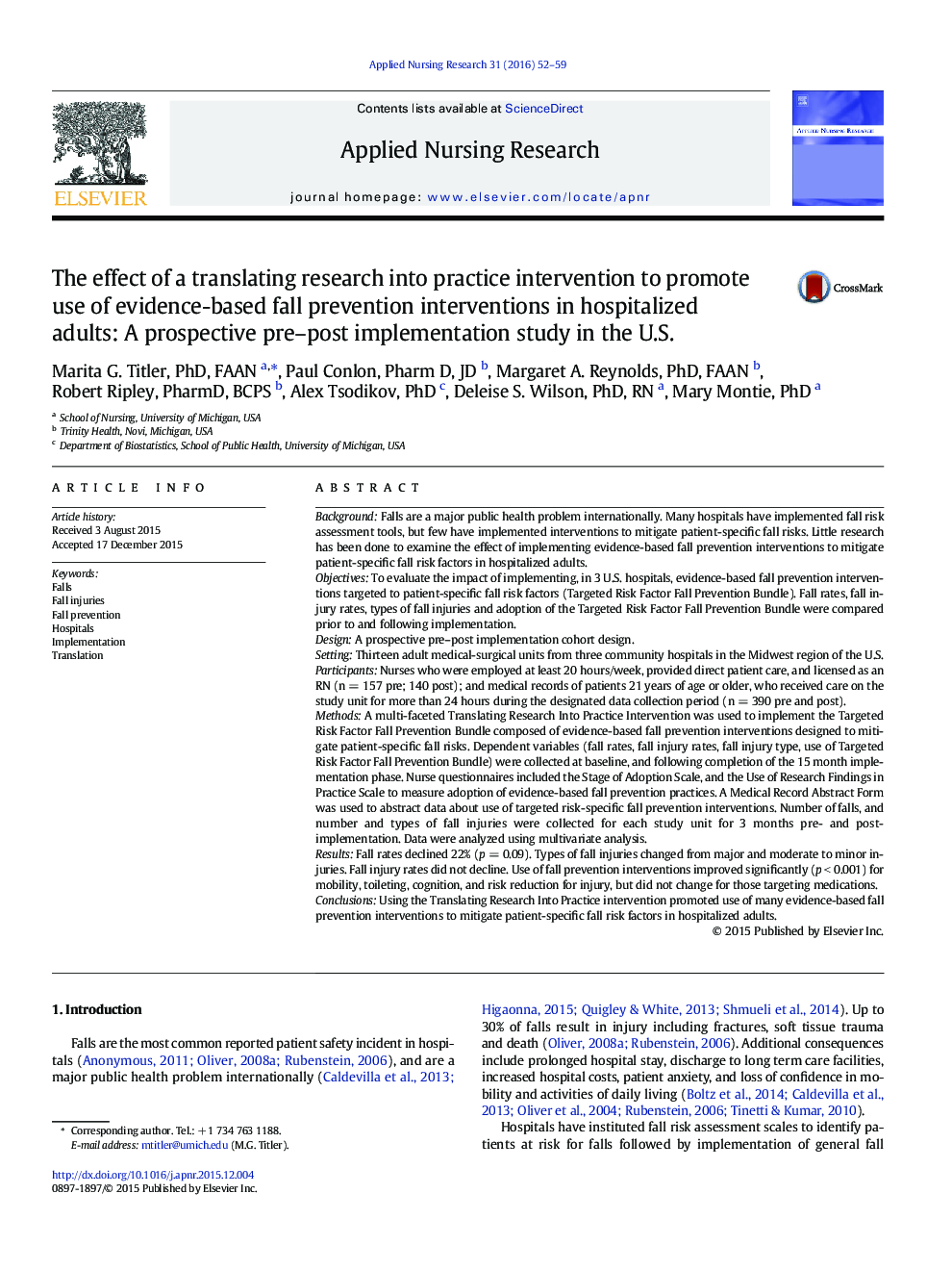| Article ID | Journal | Published Year | Pages | File Type |
|---|---|---|---|---|
| 2644948 | Applied Nursing Research | 2016 | 8 Pages |
BackgroundFalls are a major public health problem internationally. Many hospitals have implemented fall risk assessment tools, but few have implemented interventions to mitigate patient-specific fall risks. Little research has been done to examine the effect of implementing evidence-based fall prevention interventions to mitigate patient-specific fall risk factors in hospitalized adults.ObjectivesTo evaluate the impact of implementing, in 3 U.S. hospitals, evidence-based fall prevention interventions targeted to patient-specific fall risk factors (Targeted Risk Factor Fall Prevention Bundle). Fall rates, fall injury rates, types of fall injuries and adoption of the Targeted Risk Factor Fall Prevention Bundle were compared prior to and following implementation.DesignA prospective pre–post implementation cohort design.SettingThirteen adult medical-surgical units from three community hospitals in the Midwest region of the U.S.ParticipantsNurses who were employed at least 20 hours/week, provided direct patient care, and licensed as an RN (n = 157 pre; 140 post); and medical records of patients 21 years of age or older, who received care on the study unit for more than 24 hours during the designated data collection period (n = 390 pre and post).MethodsA multi-faceted Translating Research Into Practice Intervention was used to implement the Targeted Risk Factor Fall Prevention Bundle composed of evidence-based fall prevention interventions designed to mitigate patient-specific fall risks. Dependent variables (fall rates, fall injury rates, fall injury type, use of Targeted Risk Factor Fall Prevention Bundle) were collected at baseline, and following completion of the 15 month implementation phase. Nurse questionnaires included the Stage of Adoption Scale, and the Use of Research Findings in Practice Scale to measure adoption of evidence-based fall prevention practices. A Medical Record Abstract Form was used to abstract data about use of targeted risk-specific fall prevention interventions. Number of falls, and number and types of fall injuries were collected for each study unit for 3 months pre- and post-implementation. Data were analyzed using multivariate analysis.ResultsFall rates declined 22% (p = 0.09). Types of fall injuries changed from major and moderate to minor injuries. Fall injury rates did not decline. Use of fall prevention interventions improved significantly (p < 0.001) for mobility, toileting, cognition, and risk reduction for injury, but did not change for those targeting medications.ConclusionsUsing the Translating Research Into Practice intervention promoted use of many evidence-based fall prevention interventions to mitigate patient-specific fall risk factors in hospitalized adults.
